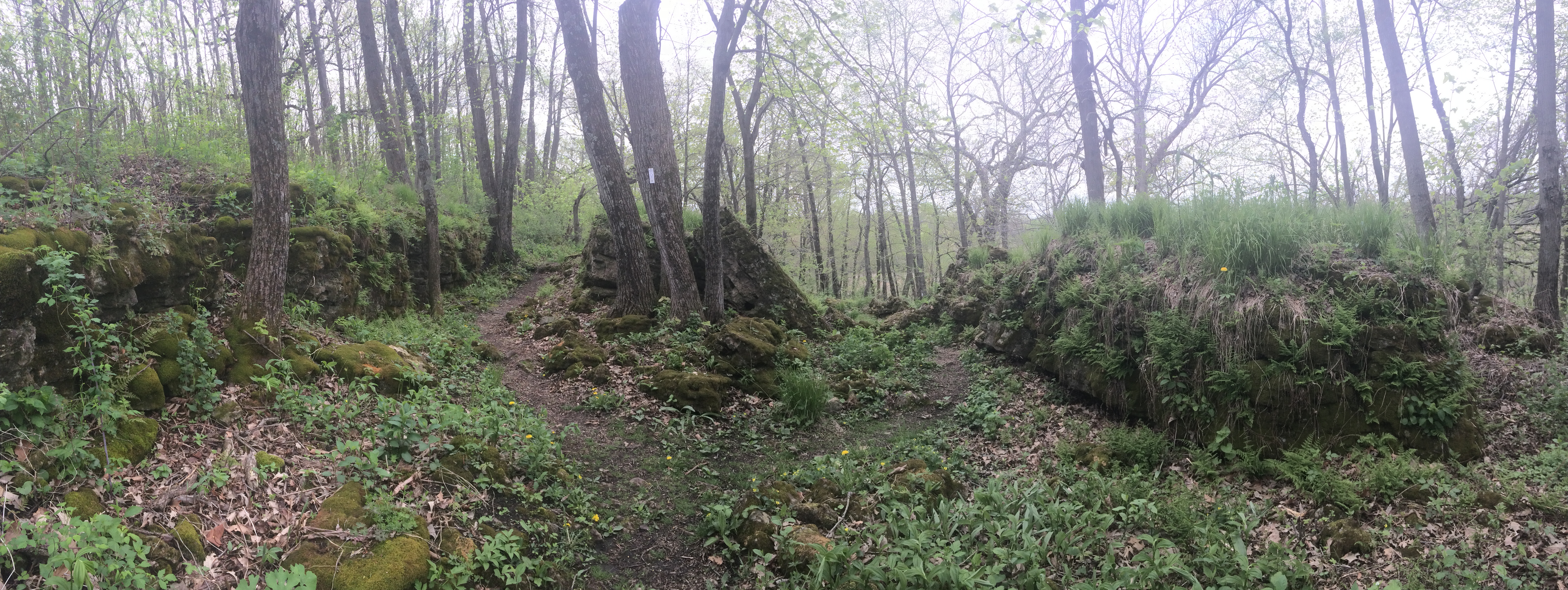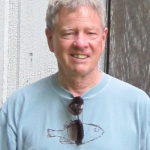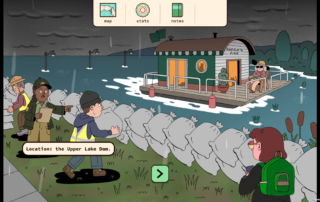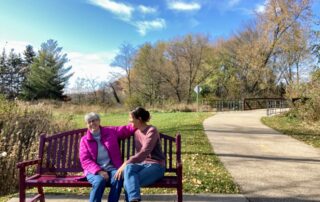The Niagara Escarpment stretches from New York to Wisconsin and shapes the geological, environmental, and human history of all that it touches. Like the escarpment, writer Robert Root’s life stretches from New York to Wisconsin. In honor of Earth Day, he shares his connection to this geologic wonder.
Synchronicity happens to everyone. Carl Jung called it a “meaningful coincidence,”, with no evident causal connection but some apparent significance. Not everyone who notices a synchronicity is haunted by it, but one that haunts me persistently centers on the Niagara Escarpment.
The Niagara Escarpment’s most prominent feature is Niagara Falls but, as a geological formation, the Escarpment arcs all the way from western New York across western Ontario and northern Michigan down through eastern Wisconsin. All of the land and all of the Great Lakes within the arc rest on Silurian strata from which escarpment outcroppings emerge. Increase Lapham, Wisconsin’s pioneer scientist, recognized the connection early from having helped excavate the Erie Canal in Lockport, New York, before finding the same strata in Wisconsin later on. The Niagara Escarpment, or “the Ledge,” is visible on Rock Island, in state and county parks like Peninsula and Potawatomi and High Cliff, and, for those looking for it, as far south as Brady’s Rocks in Waukesha County.
For me, that’s where synchronicity comes into play. Like Lapham, I began in western New York, born and raised in Lockport. Like Lapham, I’ll end in Waukesha County. Unlike him, I spent the middle of my life in Michigan, often visiting the Upper Peninsula unaware of walking on the escarpment. The idea that the escarpment and I begin and end in the same places is the synchronicity I can’t get out of my mind.
The Niagara Escarpment stretches from New York to Wisconsin and shapes the geological, environmental, and human history of all that it touches. Like the escarpment, writer Robert Root’s life stretches from New York to Wisconsin. In honor of Earth Day, he shares his connection to this geologic wonder.
On the Eagle segment of the Ice Age Trail you pass through oak savanna and low wetlands before you reach the loop for Brady’s Rocks. You walk beneath century-old oaks and gaze at the largest wet prairie east of the Mississippi. If the wind drowns out distant traffic sounds and you look across swaying grasses stretching in the distance, you can imagine how Michael and Kathleen Brady saw it for the first time when they began to farm here in 1855. Remnants of a stone rubble fence are all that remains of their farm. Outcroppings of stone that perch on the side of a slope are the most exposed natural evidence of the Niagara Escarpment in the county. If you’re looking for a place to witness the end (or the beginning) of the arc of the Escarpment, this is the place to come.
Ice Age Trail volunteers maintain the Brady’s Rocks loop. There you pass between rock formations often shoulder height, head height, and higher, random blocks of stone coated in thick coverings of moss, large free-standing blocks and short towers, and then a continuous wall of exposed stone. Amid abundant undergrowth you find distinctive ferns: cliff brake, fragile fern, and the intriguing walking fern, which grows a new fern when a leaf tip touches wet ground and thus “walks” across its habitat. The Brady’s Rocks Loop has a kind of intimate seclusion, made more intimate and more secluded by the way the rocks obscure the view as you walk among them.
Each time I walk among Brady’s Rocks, I’m haunted by synchronicity. Here the Niagara Escarpment and I both end, I think. I confess that I’ve started to walk the escarpment all the way back to the Erie Canal, headed back to where we both began.











